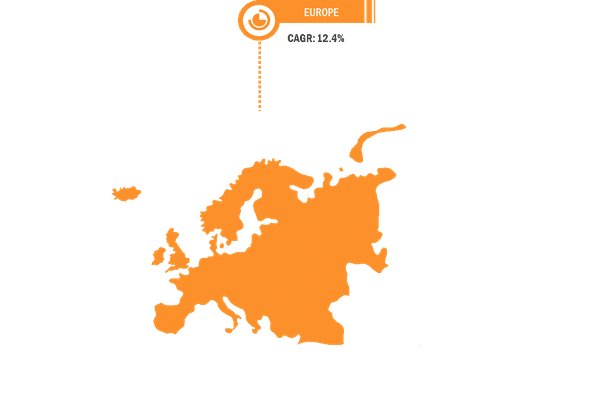
Published On: Jan 2022

Published On: Jan 2022

According to our latest market study on "Europe Green Building Market Forecast to 2028 – COVID-19 Impact and Analysis – by Product Type (Insulation, Roofing and Siding, Interior Products, Building Systems, and Others) and Building Type (Residential and Non-Residential)," the market is projected to reach US$ 122.6 billion by 2028 from US$ 54.1 billion in 2021; it is expected to register a CAGR of 12.4% from 2021 to 2028.
A green building design can exhibit eco-friendly features such as the efficient use of energy, water, and other resources; use of renewable energy; measures for pollution and waste reduction; adoption of reuse and recycling processes; use of non-toxic materials; dynamic design adaptable to the environment; good quality of indoor environmental air; and enhanced quality of life of occupants. Owing to the thriving ecosystem for the green building market in Europe, several spectacular eco-friendly buildings have been designed, built, and showcased in Europe. A few examples of these buildings are Cube in Germany, the Edge in the Netherlands, and Bloomberg in the UK. These green buildings are building a positive influence on the green building market in Europe by creating avenues for innovation and setting the trends for the green building market.
The growth of the Europe green building market is further ascribed to several government policies adopted by European countries, and the EU policy framework concerning the development of green and sustainable housing. For instance, in 2020, the European Commission announced a Renovation Wave to improve the energy performance of buildings across the EU by doubling renovation rates by 2030. This is expected to result in the renovation of over 35 million buildings by 2030, in addition to the new building construction. Similarly, the Europe Regional Network (ERN), a network of over 20 national green building councils, 8 regional partners, and ~5,000 members, is engaged in ensuring the integration of sustainability across the value chain of the construction sector, thereby leveraging its influence and knowledge to transform the European buildings market. Owing to the thriving ecosystem for the green building market in Europe, several spectacular eco-friendly buildings have been designed, built, and showcased in Europe. A few examples of these buildings are Cube in Germany, the Edge in the Netherlands, and Bloomberg in the UK. These green buildings are building a positive influence on the green building market in Europe by creating avenues for innovation and setting the trends for the green building market worldwide. For example, The Edge is renowned worldwide for its use of IoT, photovoltaic, and LED technologies, among other advanced technologies, to measure and attain energy efficiency.
The Europe green building market is segmented into product type and building type. Based on product type, the market is segmented into insulation, roofing and siding, interior products, building systems, and others. The insulation segment is expected to hold the largest market share due to the growing demand for fiberglass, cellulose, natural fiber (cotton, wool), polystyrene, and polyurethane. Based on building type, the market is segmented into residential and non-residential. The non-residential segment is expected to hold a larger market share as a large number of corporate organizations are adhering to zero/low emissions policies of the EU, which requires them to adopt green building practices in their offices.
The key market players or manufacturers in the Europe green building market include Bauder Ltd; AECOM; Skanska; Turner Construction Company; DuPont de Nemours, Inc.; Wienerberger; Alumasc Group plc; Forbo International SA; HOLCIM; and Kingspan Group PLC.
In Europe, currently, France, the UK, and Russia are the worst-impacted countries by the COVID-19 pandemic. The pandemic has created a temporary distortion in operation efficiencies of industrial bases in the European market. The green building market has been negatively impacted due to disruptions in the supply chain. The construction industry from the region has faced challenges in terms of the availability of construction materials. The supply networks for construction materials have also been disrupted. The ongoing construction projects were temporarily halted due to the pandemic, which affected the market dynamics for the green building market. The declining trend in the construction industry due to the pandemic has hampered the production of roofing, flooring, and insulation for green buildings. However, various industries are coming back on track after supply constraints affecting these industries are resolving gradually. The rising demand for green buildings across diverse industrial applications is expected to boost the growth of the Europe green building market in the region.


Based on product type, the market is segmented into insulation, roofing and siding, interior products, building systems, and others. Based on building type, the market is segmented into residential and non-residential. Based on country, the market is segmented into Germany, the UK, France, Italy, Russia, and the Rest of Europe.
Contact Us
Phone: +16467917070
Email Id: sales@businessmarketinsights.com